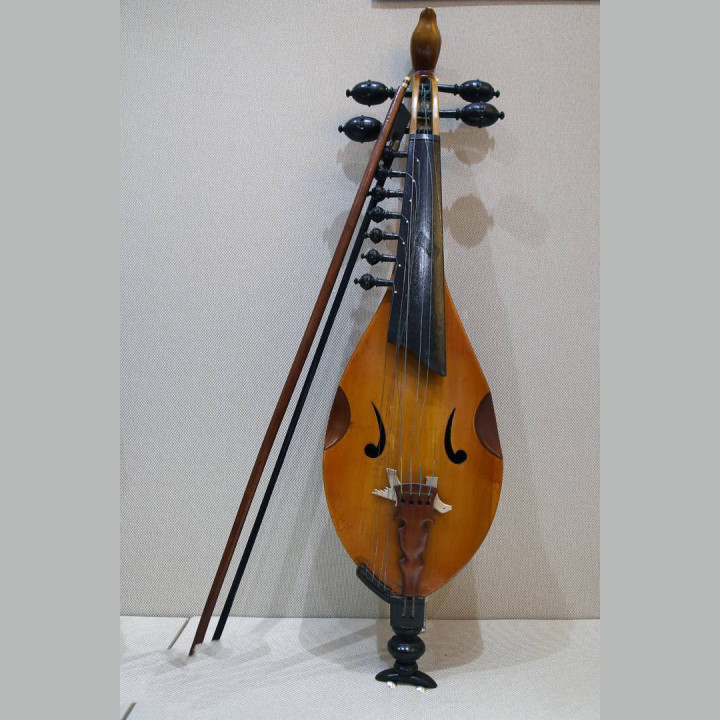The structure of Husitar
Husitar, similar in appearance to the western stringed instrument Mandolin, has a total length of 68 cm and consists of a resonance box, a headstock, a peg, a neck, a fingerboard, a bridge, a tailpiece, strings and a bow. constitute.

sound box
Half-pear-shaped, relatively large, the back board is made of mulberry or apricot wood, and it is made of six wooden boards that are glued together. The shape is like a scoop. The ridge is arched, and the two sides of the middle are indented to facilitate bow movement; there are two sound holes in the middle, which are in the shape of symmetrical bass clefs.
headstock, neck
Made of a piece of wood, the upper end is the head, 15 cm long, carved in the shape of the head of a lark, like a lark singing with its head held high, the string groove is opened at the back, there are four pegs on the left and right sides, and four string holes at the lower end of the front. chord pillow.
peg
It is made of walnut wood, conical in shape, the shank is elliptical and spherical, and the four axes are used to wind the main strings.
Fingerboard
Shorter, only 13 cm long, with a hardwood fingerboard glued on the front for pressing the strings, and seven pegs on the left side of the neck for tensioning the resonating strings.
bridge, tailpiece, strings
There is a wooden bridge in the middle of the panel. The four main strings are violin strings, which are tied to the wooden tailpiece at the lower end through the bridge. The seven resonance strings are made of steel strings, which are directly tied to the bottom of the violin through the bridge.
bow
There is a herringbone movable bracket at the bottom of the piano case, and the bow is a violin bow.
 渝公网安备 50010702504639号
渝公网安备 50010702504639号